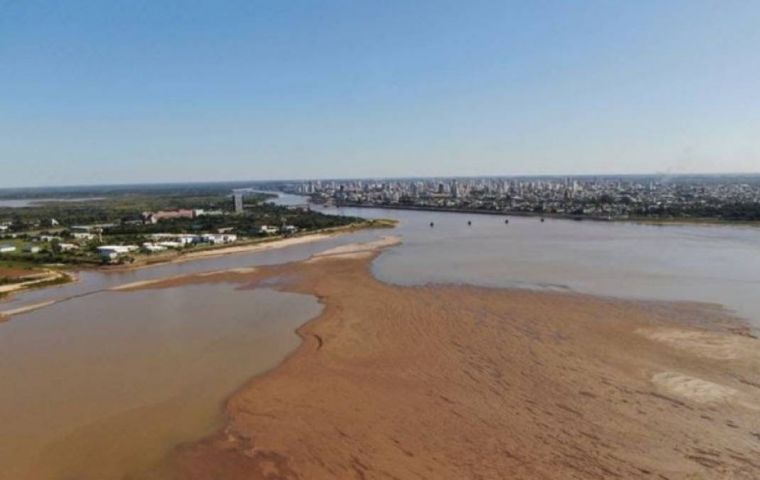Wednesday, July 14th 2021
 Bolsonaro has chosen in order to maintain a certain popularity among his most loyal fans to stage motorcycle caravans in several cities
Bolsonaro has chosen in order to maintain a certain popularity among his most loyal fans to stage motorcycle caravans in several citiesBrazilian President Jair Bolsonaro Tuesday expressed his support for the Cuban people protesting against their living conditions under the Communist Government of Miguel Díaz-Canel.
”I support the movements for freedom in Cuba. I want to see if (former President Luiz Inácio) Lula (Da Silva) does the same,” said Bolsonaro.
“Lula is a criminal who cannot go out on the streets and is with almost 60% of the intention to vote. In order not to be like Cuba we have to avoid electoral fraud in the 2022 elections,“ he added.
Bolsonaro criticized the Communist regime. He stressed that ”Cuban medicine is a sham” and recalled that 15,000 Cuban doctors who were working in Brazil with an agreement with the Pan American Health Organization (PAHO) decided to leave before he took office.
“In order not to be like Cuba, we must have the auditable vote,” he said, insisting on the need to change the electronic ballot box system that Brazil has used since 1996.
Opposition politicians and media outlets have maintained that Bolsonaro's objections to that system were unfounded.
In another geopolitical move along the same lines, Foreign Minister Carlos França, Tuesday released a statement supporting Juan Guaidó in Venezuela, whom Brazil still considers the country's interim president.
Since he took office in 2019, Bolsonaro has aligned himself with the United States and Israel to maintain the economic embargo against Cuba at the United Nations and now seems to have taken the flag in favor of opponents of the government of President Miguel Díaz Canel.
Bolsonaro has reportedly suffered a loss in his popularity down to 24%, especially due to his peculiar handling of the coronavirus pandemic and is now believed to be unable to beat Lula in next year's elections, according to pollstersd Datafolha.
Over the weekend, a survey has found that 63% of the population considers Bolsonaro incapable of governing and that he is repudiated by 59% for the October 2022 elections.
In this context, the president said that he “shits” on the Senate committee investigating the pandemic (CPI), where its members have accused him of 'health genocide' and that his profile of “myth” against corruption that spread in the 2018 campaign began to blur. He is also being investigated by the STF for malfeasance.
The president admitted on Monday night that he had received a complaint from a documented ally of overpricing in the purchase of Covaxin vaccines and that he did not make the complaint. He argued that he passed the papers on to then Health Minister General Eduardo Pazuello.
Bolsonaro has chosen in order to maintain a certain popularity among his most loyal fans to stage motorcycle caravans in several cities, while the opposition took to the streets to demand his impeachment, which has been halted by his ally and House of Deputies Speaker Arthur Lira.
There is also a conflict between CPI head Senator Omar Aziz and the heads of the three armed forces. The crossing of complaints and threats has escalated so much that Tuesday afternoon Bolsonaro had meeting with STF Chief Justice Luis Fux. The magistrate invited him to seal a defense agreement for the institutions. Upon exiting the meeting, Bolsonaro was once again irritated and angry with one of the journalists who questioned him.
To avoid losing the control, shouting, ordered everyone to pray the Our Father. With apparent health problems, he told his followers that he suffered suffering from hiccup attacks.
Lula did adress the Cuban crisis, but like Argentine President Alberto Fernández, he drew the spotlight onto the US trade embargo: ”Americans have to stop with that grudge; the blockade is a way of killing human beings who are not at war. What is the United States afraid of? I know what one country is trying to interfere with another; (President Joseph) Biden should take advantage of this moment to announce on television that he is going to adopt the recommendation of the UN countries and end this blockade,” Lula said on social media.
Also Tuesday Bolsonaro signed into law the privatization of Eletrobras and vetoed social protection for the workers who are being laid off in the process, which had been approved by Congress. Following the change of hands of the electricity company, consumers fear rates will rise up to 15 percent, while government officials have estimated that under the new management they might fall up to 7.36%.
Privatization has come at a difficult time for hydroelectric power in Brazil, its main source, as a result of the worst drought in the last 91 years in the southern and southeastern basins of the country, including that of the Paraná River.
According to the new law, Eletrobras stock is to be listed on the São Paulo Stock Exchange, and the State will keep 4 to 5% of the shares.
Bolsonaro has also banned those to be dismissed from acquiring shares of the company at a discount price as part of their severance pay and has also stricken the clause that allowed them to be employed by other energy-related companies or public entities.
The President also vetoed a provision whereby the Senate should evaluate the directors of the National Electric System Operator, the one responsible for coordinating the entire generation and transmission network of the country.
The sale of Eletrobras is carried out through a share package, as also happened with the service station giant of the oil company Petrobras, called BR Distribuidora, today in the hands of investment funds that own the majority of the shares.
The first attempt to privatize Eletrobras had been between 2016 and 2018 during the administration of Michel Temer, whose agenda for the sale of public assets was deepened with the arrival of Bolsonaro with his Minister of Economy, Paulo Guedes, an ultra-liberal from the Chicago School of Economics that vindicates Ronald Reagan, Margaret Thatcher and Augusto Pinochet, for whom he worked in Chile in the eighties.












/cloudfront-ap-southeast-2.images.arcpublishing.com/nzme/CES2AEWGVVRQESYMF2RGFMRPKY.jpg)
/cloudfront-ap-southeast-2.images.arcpublishing.com/nzme/MEY3MMVMULI3V2NSF7IDQI7EYI.jpg)
/cloudfront-ap-southeast-2.images.arcpublishing.com/nzme/C3HNJIG7JPHXHGN2PEF6JSNPXY.jpg)
/cloudfront-ap-southeast-2.images.arcpublishing.com/nzme/BJFPT2WKSVEIUVQEBHSLIKAPWE.jpg)
